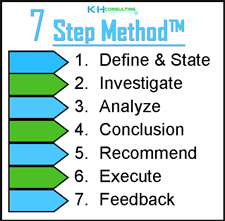Productivity Consulting
Business Improvement

Business improvement should not only arise from organic growth but from measured initiatives and well laid out goals and objectives. Business owners have to understand their core competencies, strengths, and weaknesses prior to evaluating potential areas of improvement. Organic growth at face value is directly tied to market conditions which, in many cases, are uncontrollable by the small business. Change in the economy, shift in target markets, or lack of resources place overwhelming demands on a "reactive" entity. Product diversity, stable capitalization, effective human capital management, and leveraged risk are components of successful business strategies outside of typical financially focused companies. To achieve improvement companies need to understand value, monetize resources, and create a path to profitability.
Restructuring
In small business organizational structures may need to change to facilitate growth of the company. Small business management often struggles with defining strategies and execution because of faulty corporate configurations. Restructuring the organization can help by providing roles and responsibilities, creating processes, developing analytics, and reallocation of resources. It can also stabilize decision-making, build business strategies, and align the new entity properly with the market. In some instances the business ownership may need to be altered to achieve optimal results. If your business seems to be struggling, take the first step and set up an appointment to evaluate options.
Monetizing Resources
What is meant by monetizing resources? The first step in the process of monetizing is evaluation of current assets both tangible and intangible. Companies that are successful build internal process and structure to leverage core competencies. Social media management, process and procedure documentation, intellectual property development, and standardized approaches to business opportunities are examples of potential areas for monetization. In service organizations personnel can be monetized for their skill sets, interconnectivity, and ability to transfer knowledge. Another example is franchising and licensing after development of a repeatable business model. Companies can create tiered infrastructure to support their distribution chain and reap the benefits. Finally, building fixed cost/transaction between divisions or departments can build profit centers and align resources accordingly.
Understanding and Using Value
Business value consists of various components including intrinsic value (assets, revenue streams, personnel), market value (opportunity), and growth value (potential). Owners and management should operate their business as "ready for sale" by knowing how the market views their organization and if it is truly salable. Operating in this manner encourages building better infrastructure and strengthens the bottom line. Relying only on financials can create a false image and limit available information for decision-making. To take advantage of "business value" we offer a diagnostic approach for owners and managers to define and execute their value building initiatives.

